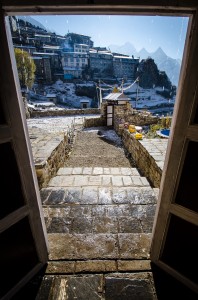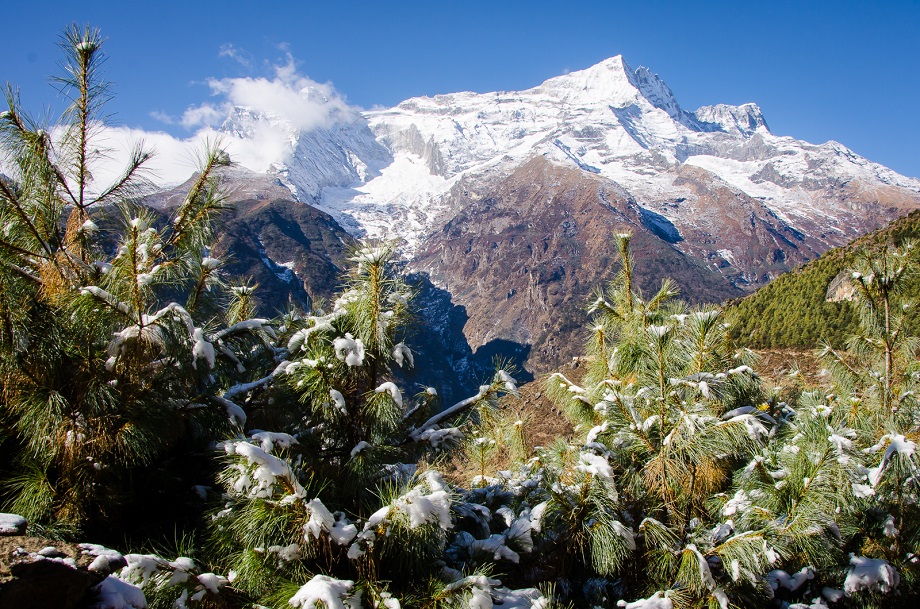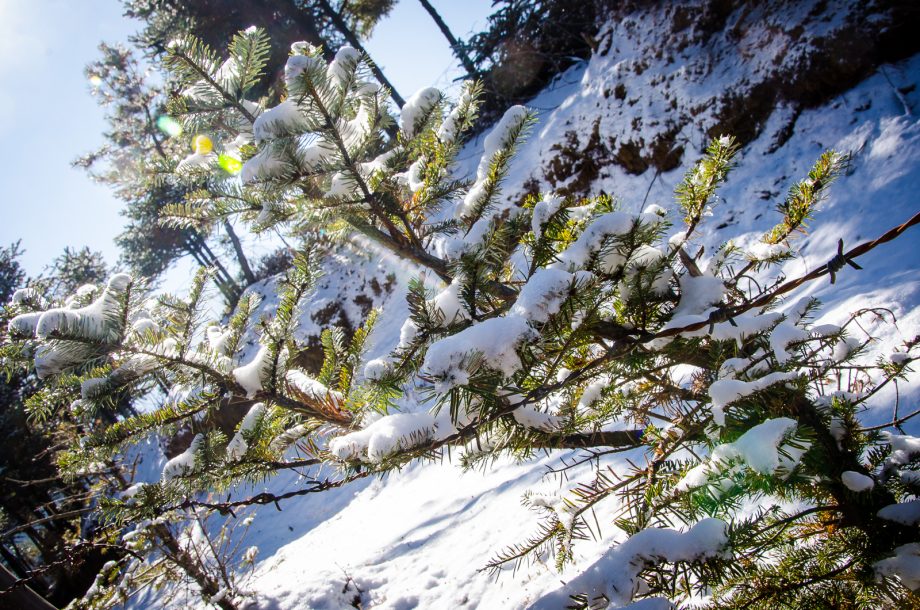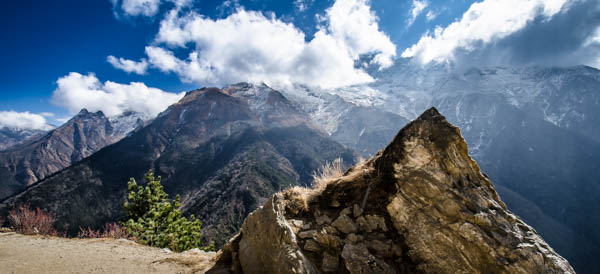EBC Day 06 – Acclimatisation at Namche Bazaar
EBC Index
Namche Bazaar
The day started off slow and relaxed with a bit of coffee and lemon tea (NPR70+150) before I went out to look around the quaint little shops that were scattered around town. Namche Bazaar (Nepali : नाम्चे बजार)
Location of Namche Bazaar
Acclimatisation
 Acclimatisation is absolutely mandatory at high altitudes due to the negative effects that the decreased partial pressure of oxygen has on your body. At high altitude, your breathing rate increases (both at rest and during exercise), less oxygen ends up getting diffused from both your lungs into the blood and from the blood to the tissues, and your VO2 max decreases by 8-11% for every 1000 metres - in my case, my VO2 Max which has peaked at 70 ml/kg/min would only be around 45 ml/kg/min in Namche Bazaar, a reduction of 35%!.
In order to counteract all these ill-effects of high altitude, your body reacts by decreasing the blood volume via the reduction of plasma levels, thus increasing the density of the blood as well as the amount of haemoglobin per unit of blood. Cardiac output also increases to compensate for the decreased oxygen that reaches the bloodstream.
When acclimatising, your body starts to make changes (that occur slowly over time) to the decreased oxygen that it is now getting. Your depth of respiration starts to increase, pressure in your pulmonary arteries is also increased, your body produces more red blood cells as well as produces certain enzymes that help facilitate the release of oxygen from hemoglobin to your body's tissues.
The key to acclimatisation is to ascend slowly and to periodically take a rest day every few days. The general rule is to not exceed an altitude gain of 500 metres in a day and to take a rest day for every 1000 metres of altitude gained, but how well each person acclimatises differs greatly and depends on many different factors. There is a common maxim that you might hear being used amongst mountaineers, "Climb High, Sleep Low"; or even amongst competitive athletes, "Live High, Train Low".
Acclimatisation is absolutely mandatory at high altitudes due to the negative effects that the decreased partial pressure of oxygen has on your body. At high altitude, your breathing rate increases (both at rest and during exercise), less oxygen ends up getting diffused from both your lungs into the blood and from the blood to the tissues, and your VO2 max decreases by 8-11% for every 1000 metres - in my case, my VO2 Max which has peaked at 70 ml/kg/min would only be around 45 ml/kg/min in Namche Bazaar, a reduction of 35%!.
In order to counteract all these ill-effects of high altitude, your body reacts by decreasing the blood volume via the reduction of plasma levels, thus increasing the density of the blood as well as the amount of haemoglobin per unit of blood. Cardiac output also increases to compensate for the decreased oxygen that reaches the bloodstream.
When acclimatising, your body starts to make changes (that occur slowly over time) to the decreased oxygen that it is now getting. Your depth of respiration starts to increase, pressure in your pulmonary arteries is also increased, your body produces more red blood cells as well as produces certain enzymes that help facilitate the release of oxygen from hemoglobin to your body's tissues.
The key to acclimatisation is to ascend slowly and to periodically take a rest day every few days. The general rule is to not exceed an altitude gain of 500 metres in a day and to take a rest day for every 1000 metres of altitude gained, but how well each person acclimatises differs greatly and depends on many different factors. There is a common maxim that you might hear being used amongst mountaineers, "Climb High, Sleep Low"; or even amongst competitive athletes, "Live High, Train Low".


Next (Day 6) : Acclimatisation at Namche Bazaar (Part 2)
EBC Index




